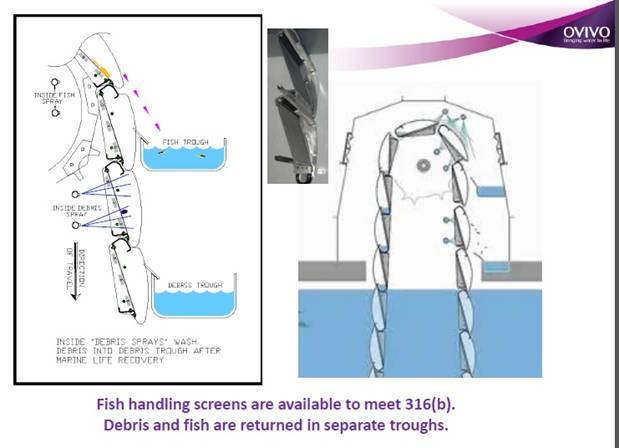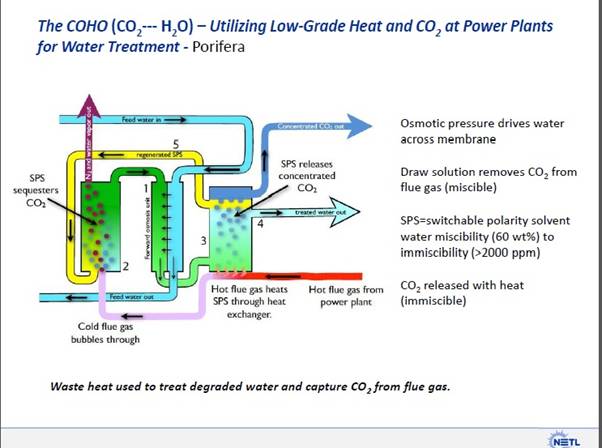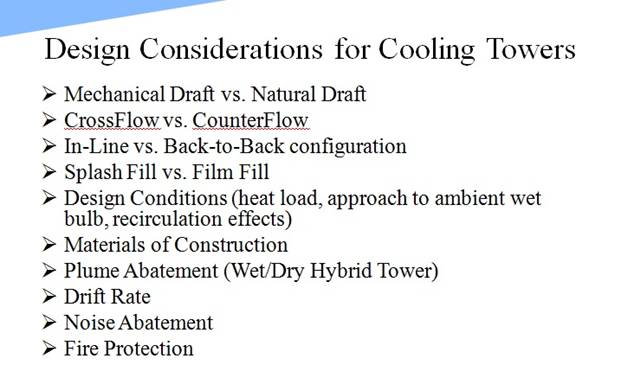
“Power Plant Cooling” was Hot Topic on November 13
This webinar focused on the decisions power plants will make relative to steam
cooling at both new and existing facilities. The following presenters examined
options for nuclear, coal and gas turbine combined cycle power plants.
Trent T. Gathright,
Business Manager - Intakes & Cooling Water Energy Group - Americas, OVIVO,
focused on the regulation protecting aquatic life which represents major
expenditures for power plants. There are a number of approaches to meeting 316B.
Some combination of the methods including fish diversion and fish handling can
be the best option for a power plant that would spend $400 million for
recirculating cooling towers or $40 million for a large new intake screen
system. For around $4 million, a fish handling screen becomes the economic
option.

In the ensuing discussion, Trent agreed that the use of variable speed drives on
the cooling pumps could be complimentary to the screens in providing the best
results.
Barbara Carney,
Chemical Engineer, Department of Energy, National Energy Technology
Laboratory discussed a number of past initiatives to use alternative
water sources such as treated municipal wastewater and to recover heat from the
flue gas. Several ongoing projects include COHO which would both recover heat
and capture CO2.

Daniel M. Cicero,
Senior Industry Development Manager, Power Group, Water & Process Services
Division, Nalco Company, described the situation with Omaha Public
Power District where use of the 3D TRASAR Cooling Optimizer allowed the plant to
safely move to over five cycles of concentration from the three cycles
previously. This allowed operation with one clarifier instead of two, reduced
water usage and reduced the thermal load in the water discharge.
Keith Silverman,
Proposal Manager, Research Cottrell Cooling stated that there are
a number of cooling tower decisions which need to be made by the specifier. They
include

Nick Schroeder,
BSME, PE, Kiewit Power Engineers, provided an interesting
perspective on the science of cooling. He showed that cooling parameters are
better evaluated using conventional heat exchange design approaches rather than
the charts typically used.
He also pointed out that the efficiency differential between coal and gas
turbine plants is much less when both are compared based on the higher heating
value. Gas turbine exhausts contain lots of water vapor but efficiency is
typically calculated based on the lower heating value. A common method of
relating HHV to LHV is:
HHV = LHV
+ hv x (nH2O,out/nfuel,in)
where hv is the heat of vaporization of water,
nH2O,out is
the moles of water vaporized and
nfuel,in is
the number of moles of fuel combusted.
Most applications that burn fuel produce water vapor, which is unused and thus
wastes its heat content. In such applications, the lower heating value must be
used to give a 'benchmark' for the process.
However, for true energy calculations in some specific cases, the higher heating value is correct. This is particularly relevant for natural gas, whose high hydrogen content produces much water, when it is burned in condensing boilers and power plants with flue-gas condensation that condense the water vapor produced by combustion, recovering heat which would otherwise be wasted..
Individual presentations follow:
General Overview of 316(b) by Trent Gathright of Ovivo - Hot Topic Hour November
13, 2014
Water-Energy Management Research and Development by Barbara Carney, U.S.
Department of Energy - Hot Topic Hour November 13, 2014
Omaha Public Power District (OPPD) uses Nalco technology to reduce water
withdrawal from the Missouri River by 290 million gallons per year by Daniel
Cicero of Nalco - Hot Topic Hour November 13, 2014
Custom solutions for the full spectrum of cooling tower applications by Kieth
Silverman of Research Cottrell Cooling - Hot Topic Hour November 13, 2014
science of Cooling by Nick Schroeder of Kiewit Power Engineers - Hot Topic Hour
November 13, 2014